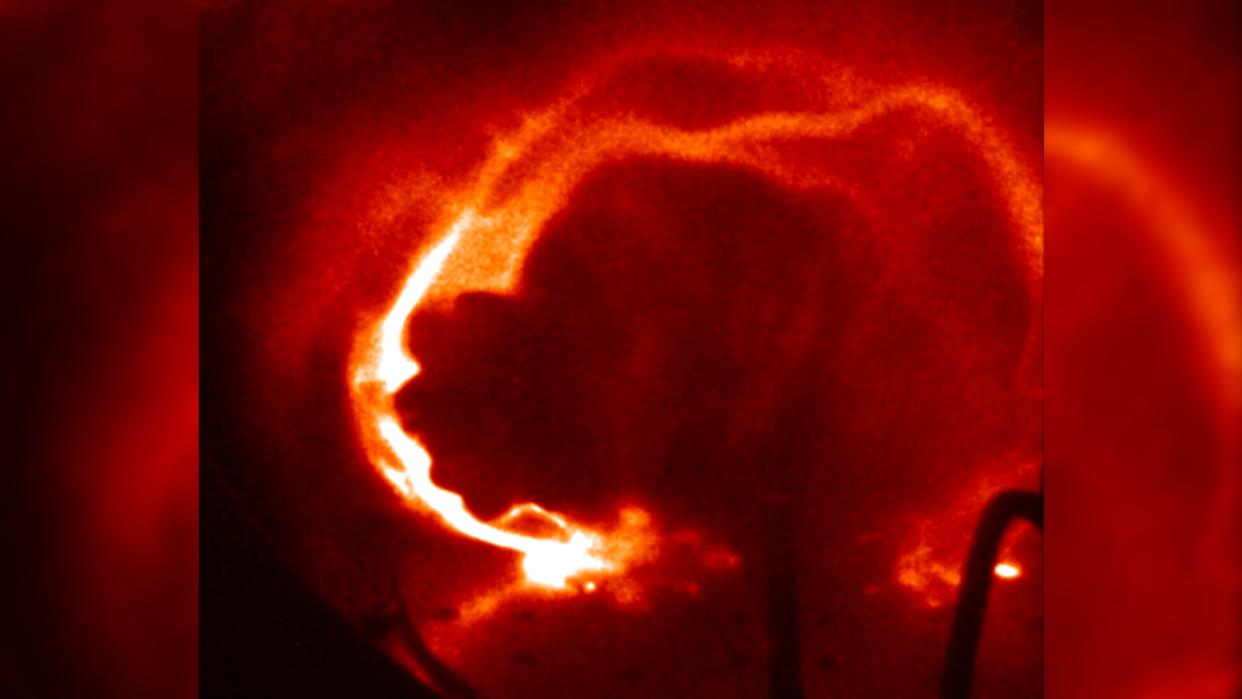Solar flares created in the lab for 1st time


Solar flares are enormous plumes of superheated plasma ejected by the sun. These massive plumes are so large, they could engulf our planet several times over. But for the first time, researchers have created mini solar flares in a laboratory that are small enough to fit inside your lunchbox.
Solar flares are birthed from large loops of plasma, or ionized gas, on the sun’s surface. These loops, known as corona loops, form along invisible magnetic field lines that get twisted by the sun's intense gravity. Sometimes, however, these lines snap back into their original shape like a rubber band, which flings plasma away from the sun.
Solar flares can also launch coronal mass ejections (CMEs) — fast-moving clouds of magnetized plasma, high-energy particles and electromagnetic radiation — that can trigger disruptive geomagnetic storms if they hit Earth. But despite observing hundreds of solar flares, researchers still don't know how they transition from corona loops into full-blown projectiles.
In a new study, published April 6 in the journal Nature Astronomy, a team of researchers from California Institute of Technology (Caltech) in Pasadena created their own artificial corona loops in the lab to try and solve this mystery.
Related: 1 million-mile-long plasma plume shoots out of the sun in stunning photo

The team discharged electricity from a pair of electrodes inside a magnetized, gas-filled chamber. The electricity ionized the gas, creating a string of plasma between the two electrodes, which was then briefly held in place as a loop by the chamber's magnetic field before collapsing and firing a mini flare outward.
The loops were around 8 inches (20 centimeters) long, around the same size as a banana, and lasted for around 10 microseconds, during which the experiment used up the same amount of energy as the city of Pasadena does in the same timeframe. Using specialized cameras that capture 10 million frames per second, the researchers watched how the loops grew and then broke apart.
The study confirmed that the artificial loops looked like ropes, just as other researchers had previously proposed.
"If you dissect a piece of rope, you see that it's made up of braids of individual strands. Pull those individual strands apart, and you'll see that they're braids of even smaller strands, and so on," study lead author Yang Zhang, a graduate student at Caltech, said in a statement. "Plasma loops appear to work the same way."
This rope-like structure may play a key role in the birth of solar flares. In the lab, the artificial loops remained stable until they were overloaded with energy, at which point a corkscrew-shaped kink appeared in the loops, and they broke apart. The video footage reveals that the kink initially caused one strand of plasma to snap, which then put additional strain on the surrounding strands, causing them to snap as well.
RELATED STORIES
—Mysterious 'sparks' on the sun could help scientists predict solar flares
—China's $1 trillion 'artificial sun' fusion reactor just got five times hotter than the sun
—Puzzle of the sun's mysterious 'heartbeat' signals finally solved
Similar kinks also appear in images of real corona loops before they break down into solar flares, the researchers wrote.
During the moment the loops snap, the researchers also detected a voltage spike. They believe that a similar spike in real solar flares could provide the necessary energy to launch the high-energy particles and radiation in a CME.
This is not the first time that scientists have attempted to replicate the sun in a laboratory setting. In January, researchers at UCLA unveiled an artificial "mini sun" that can generate sound waves to mimic the effects of gravity. The plasma-filled glass sphere, which is just 1 inch (3 cm) across, could also be used to study how the sun's magnetic fields influence solar flares.
